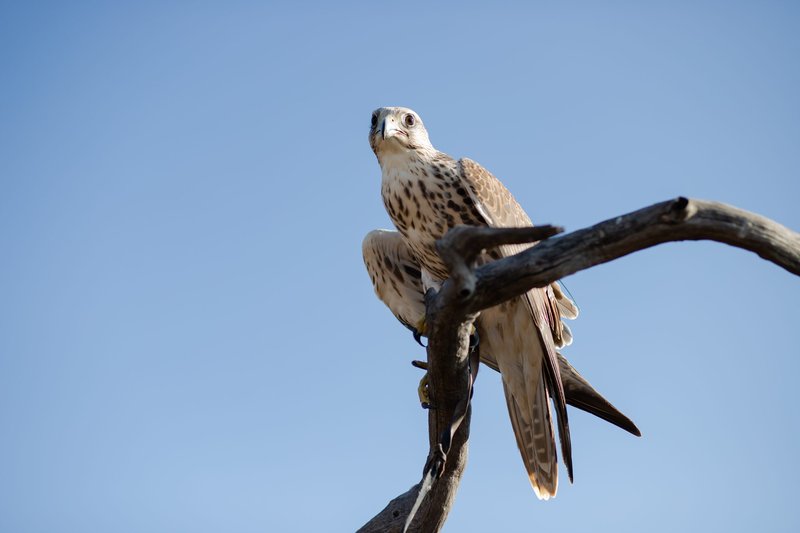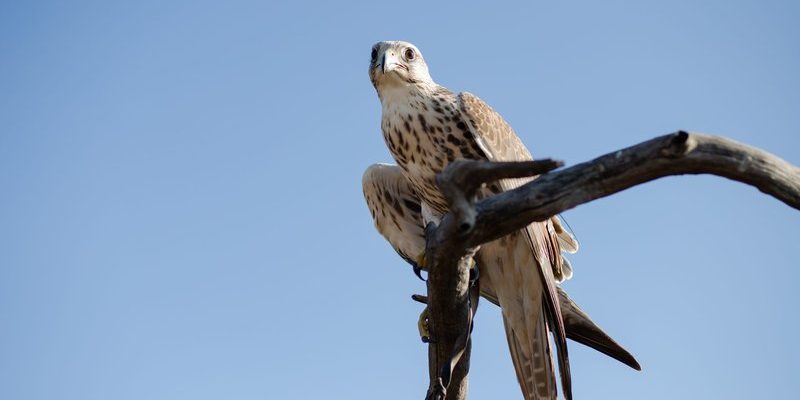
The Saker Falcon is a powerful bird of prey found mainly in parts of Europe, Asia, and the Middle East. It’s not just the way they hunt that captures our attention; their nesting habits and lifecycle are equally intriguing. They put a lot of thought into where they build their nests—often selecting isolated cliffs or tall trees that provide safety from predators. So, let’s explore what makes the nesting habits of the Saker Falcon so special and how these incredible creatures bring their young into the world.
Where Do Saker Falcons Build Their Nests?
Saker Falcons have a knack for choosing the right spot for their nests. They prefer locations that stay out of reach of most ground predators. Usually, they opt for high ledges on cliffs or in tall trees. This gives them a great vantage point to spot food and keep an eye on potential threats. It’s like finding the perfect apartment with a view!
In urban areas, Saker Falcons have adapted surprisingly well. They may even choose ledges on buildings or bridges that mimic their natural nesting sites. Here’s the thing—this adaptability showcases their resilience and cleverness when it comes to survival. They often build their nests using sticks, grass, and other materials they can find nearby, making it a cozy place for their eggs.
One important aspect of choosing a nest site is accessibility to food. Saker Falcons primarily hunt small mammals and birds. By nesting in areas where food is abundant, they increase their chances of successfully raising their young. Ultimately, the right nest site is all about safety, comfort, and proximity to food sources.
The Courtship Ritual
Before Saker Falcons can start their families, they go through a fascinating courtship ritual. This part of their lifecycle is like a dance, full of aerial displays and vocalizations. Male falcons often perform spectacular flight maneuvers, swooping and diving to impress potential mates. It’s a bit like a bird version of a talent show, where the hope is to win over a partner!
During this time, the males also bring food to the females. It’s not just about showing off; it’s about proving they can provide. This act plays a crucial role in attracting a mate. If a female sees that a male can successfully hunt, she’s far more likely to choose him as her partner. Once they pair up, the bond strengthens as they share tasks like nest building and defending their territory.
After the courtship, the female lays her eggs—usually between 3 to 5 in a single clutch. You might be wondering what happens next. Typically, both parents take turns incubating the eggs to keep them warm and safe until they hatch.
Incubation Period
The incubation period for Saker Falcon eggs lasts about 28 to 32 days. During this time, both parents are actively involved in ensuring the eggs are well cared for. They take turns keeping the eggs warm and protected. It’s a real teamwork effort, and it’s heartwarming to see how they support each other.
While one parent sits on the nest, the other hunts for food. Once caught, they’ll bring the prey back to the nest for the incubating partner. This dynamic gives their young the best chance at survival. Honestly, it’s like running a family business—each member has specific roles that contribute to the group’s success.
Sometimes, if the weather is harsh or food is scarce, the parents might seek shelter or adjust their hunting patterns. The ability to adapt to changing conditions is vital during this crucial time, ensuring that the eggs are not just warm but also nourished through their parents’ efforts.
Hatching and Caring for the Chicks
Once the eggs hatch, the real work begins. Saker Falcon chicks, also known as eyasses, come into the world covered in down feathers and are quite helpless at first. They rely entirely on their parents for food and warmth. It’s a busy time, as the parents need to bring in food constantly to support their growing young.
In the first few weeks of life, the chicks will spend most of their time in the nest, while the parents continue to ensure their safety and nourishment. The parents have to be vigilant to protect their nest from various predators. This protective nature is quite strong; they’ll fiercely defend their territory if they perceive a threat. It’s almost like they’ve enrolled in a parenting boot camp!
As the chicks grow, they begin to develop feathers and start exercising their wings. This is a crucial time in their development, as they learn to prepare for flight. Watching them take those first tentative flaps is a remarkable sight. It marks the beginning of their journey toward independence.
Fledging and Independence
Fledging, or learning to fly, is a thrilling stage in a Saker Falcon’s lifecycle. Typically, the chicks leave the nest about 40 to 50 days after hatching. This event is not just about flying; it’s about exploring the world on their own. Once they leave the nest, they often remain close to their parents for some time, still relying on them for food and guidance.
During this period, the young falcons practice their flying skills. They might flap around nearby trees or cliffs, gaining confidence each day. It’s like being a teenager taking those first steps towards adulthood. You can almost sense their excitement and a little nervousness in the air!
After a few weeks, the parents will gradually reduce the amount of food they provide. This encourages the chicks to hunt for themselves. While it might seem harsh, it’s essential for their independence. Eventually, they must groom their hunting skills, which will be vital for survival in the wild.
Life Beyond the Nest
Once Saker Falcons have fledged and learned to hunt, they embark on their own journeys. By around 10 to 12 weeks after hatching, they’ll start to explore further from their nest site. This is when they really begin to establish their territories. You might wonder how they know where to go. Their instincts guide them, and they rely on what they learned from their parents during those early weeks.
Young Saker Falcons are still vulnerable at this stage, and many will face challenges as they adapt to their new lives. Competition for food, encounters with other birds of prey, and harsh weather conditions can all pose risks. However, their strong adaptability surfaces once again, helping them navigate these challenges.
Eventually, as they mature, Saker Falcons will find mates and start their life cycle anew. It’s almost poetic to think about how these birds, once reliant on their parents, will soon become the caretakers of the next generation.
In conclusion, the nesting habits and lifecycle of the Saker Falcon are wonderful examples of nature’s design. From clever nest selection to intricate courtship rituals, these birds have evolved to thrive in a variety of environments. By understanding their behaviors, we gain a deeper appreciation for their role in the ecosystem and can contribute to their conservation. Whether you’re a birdwatcher, an ecologist, or just someone curious about wildlife, the Saker Falcon’s journey is a testament to resilience and adaptation in the wild.

